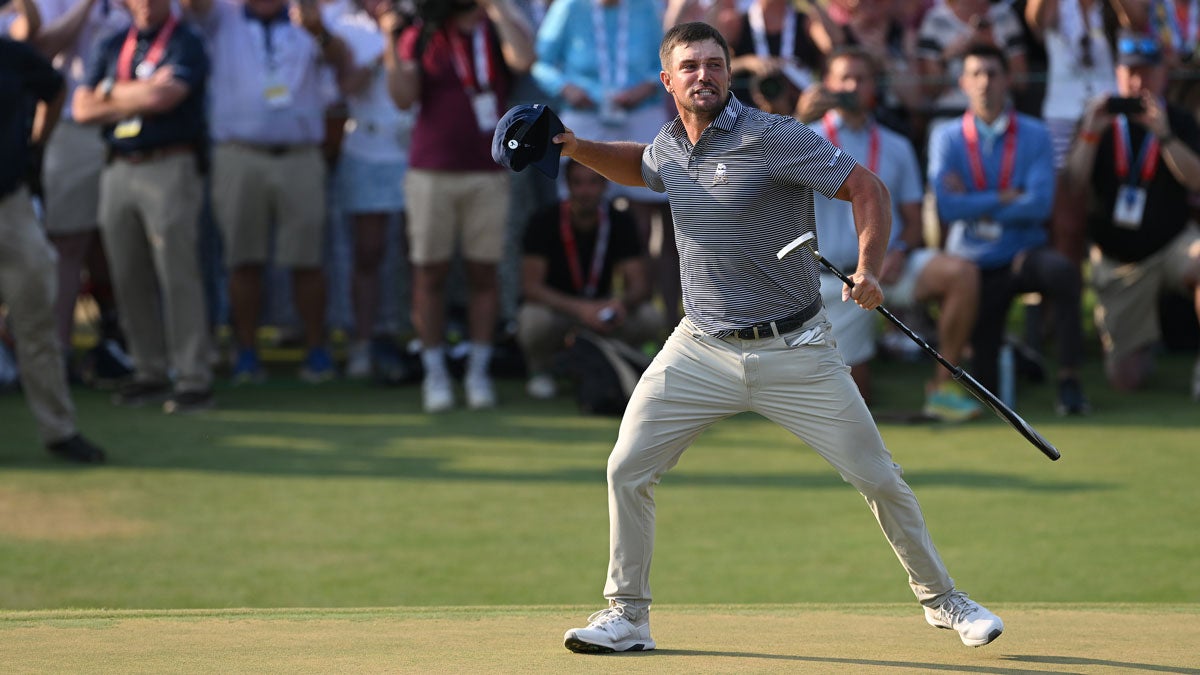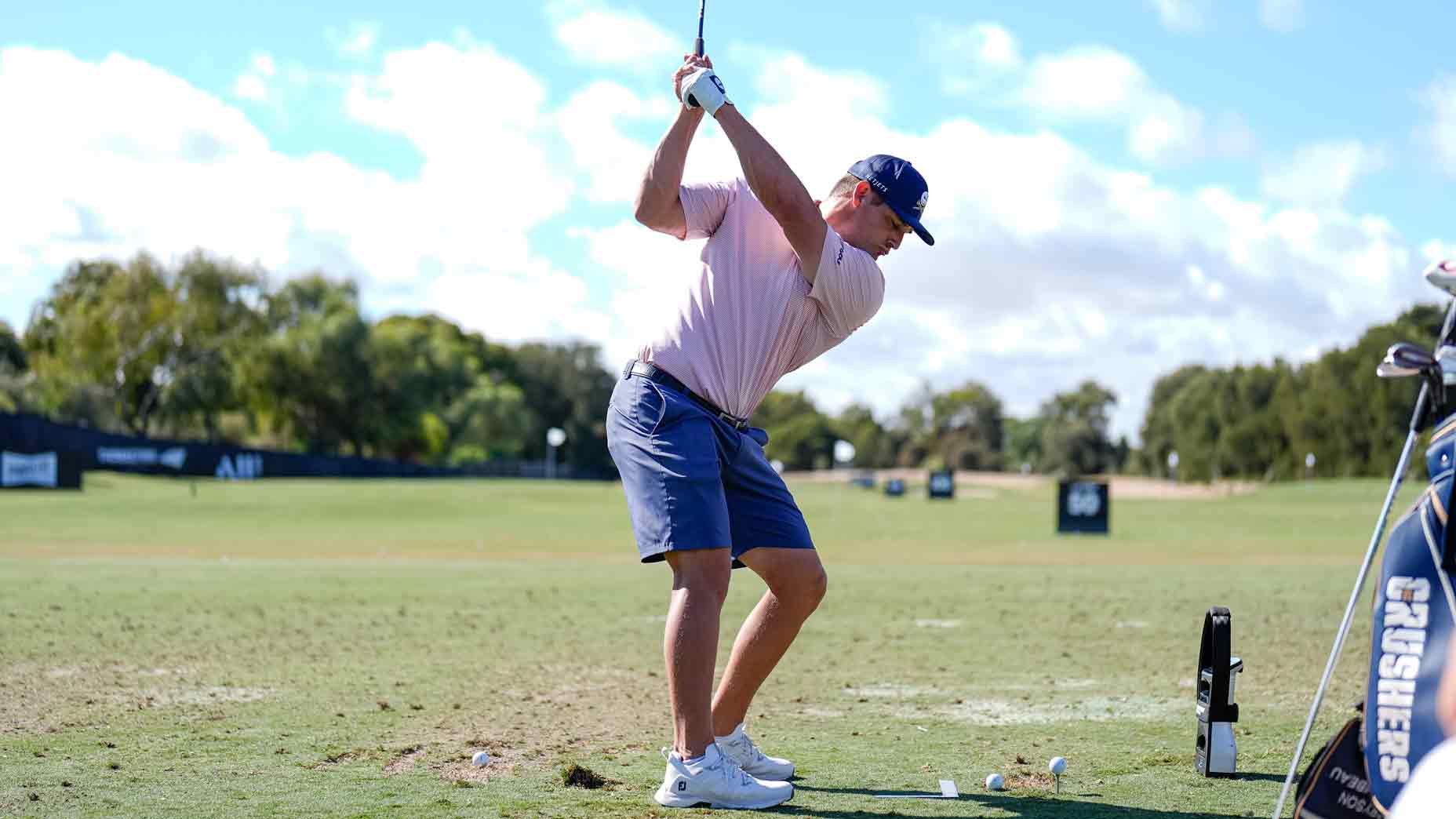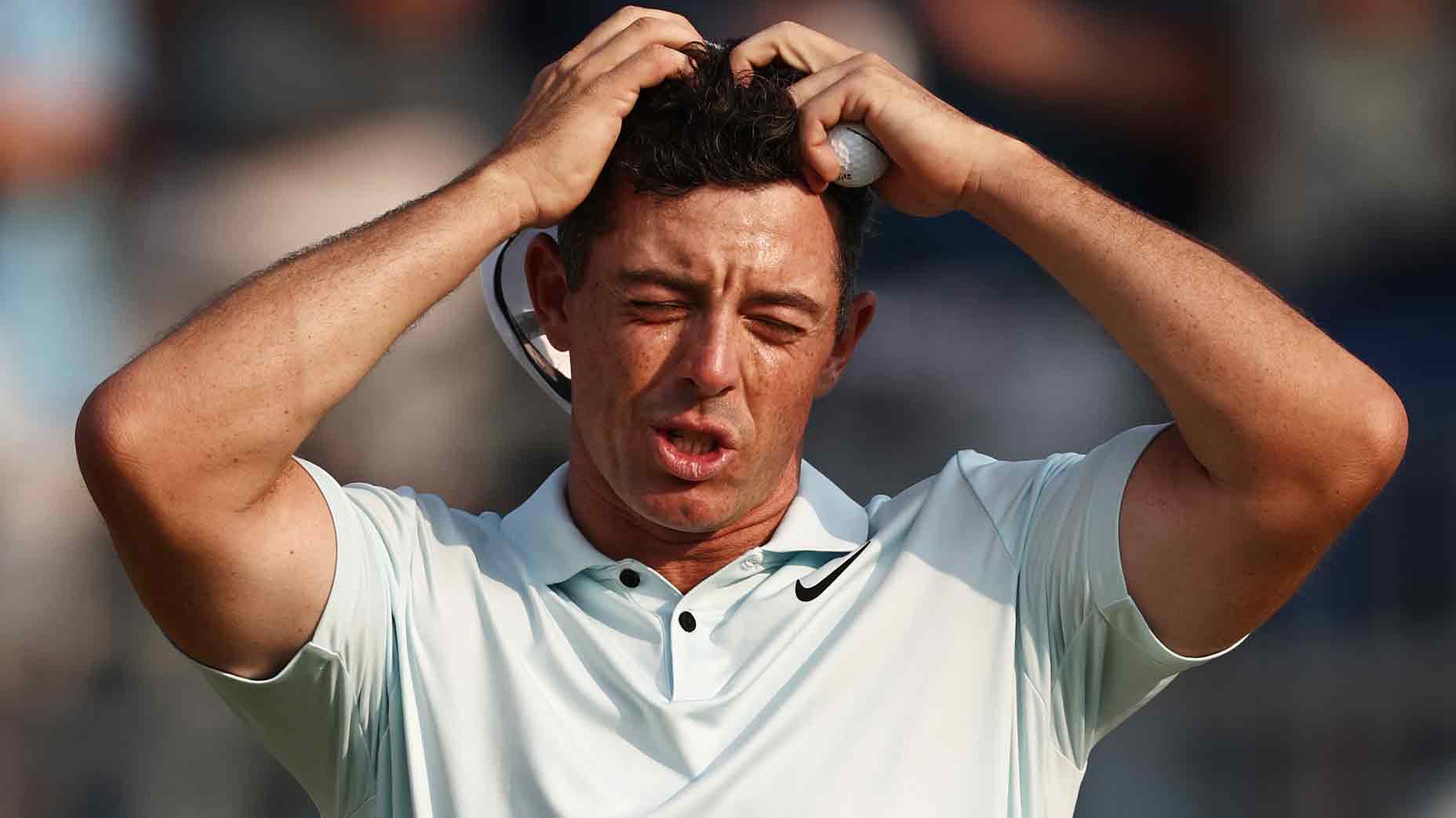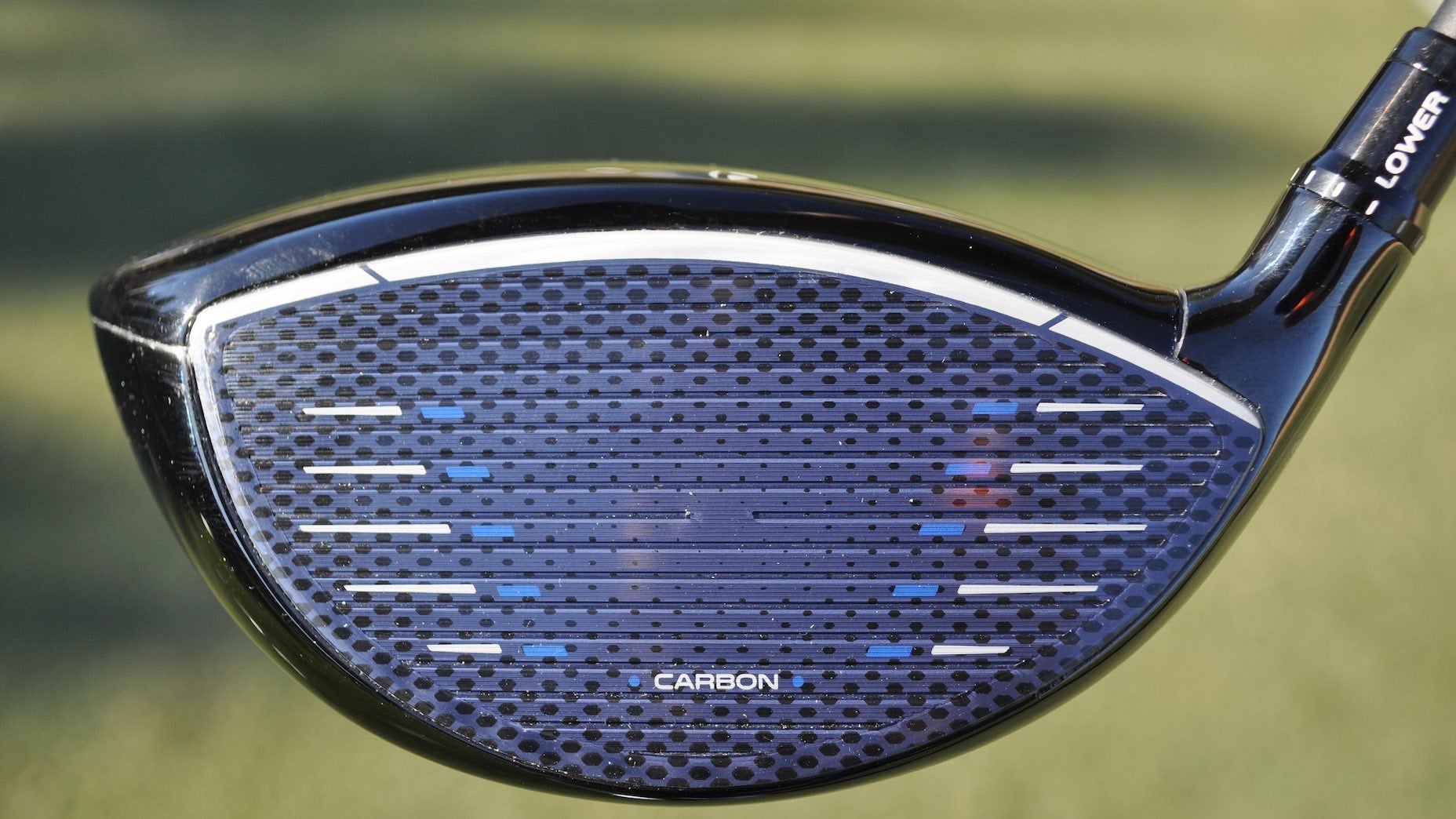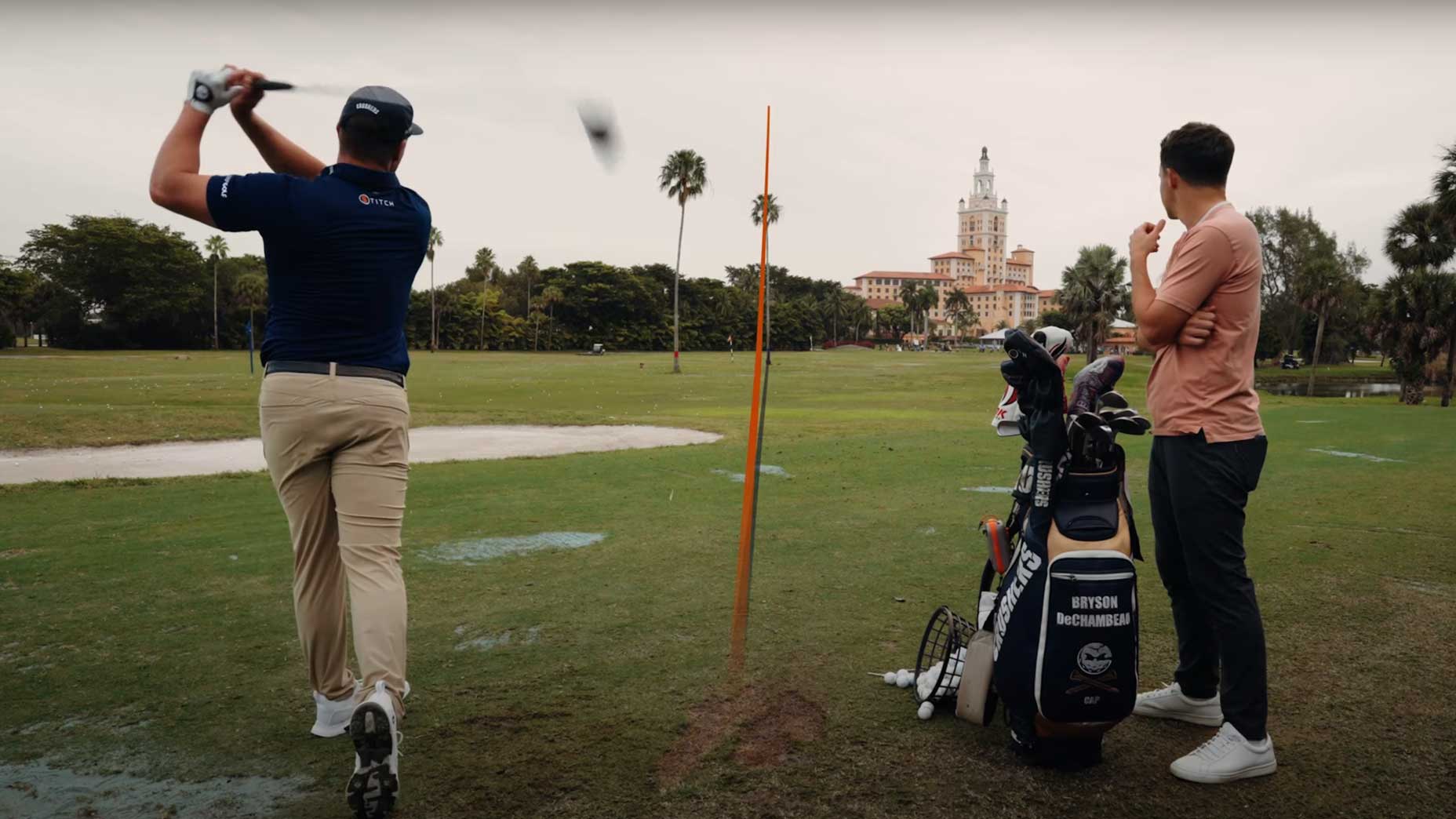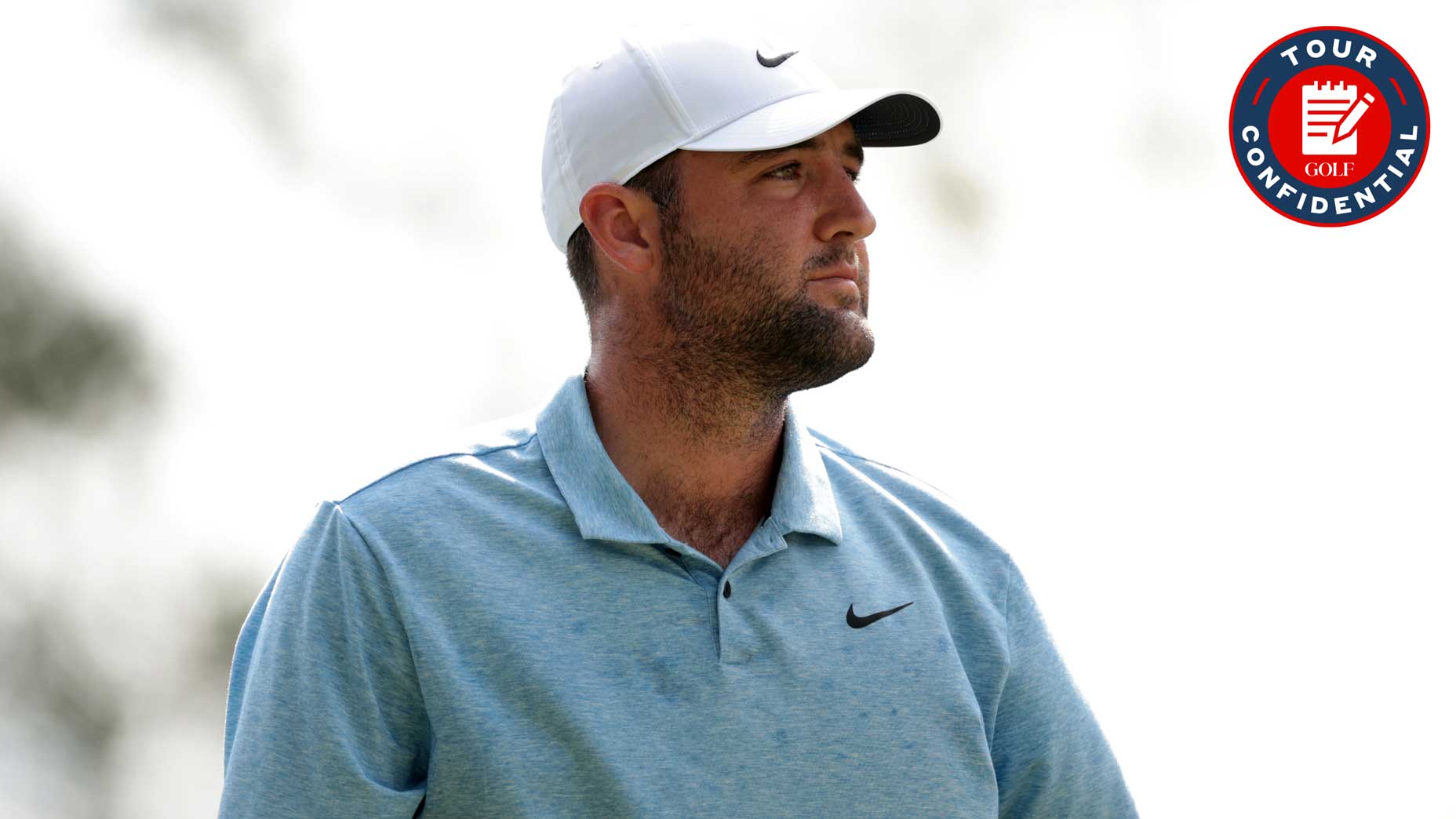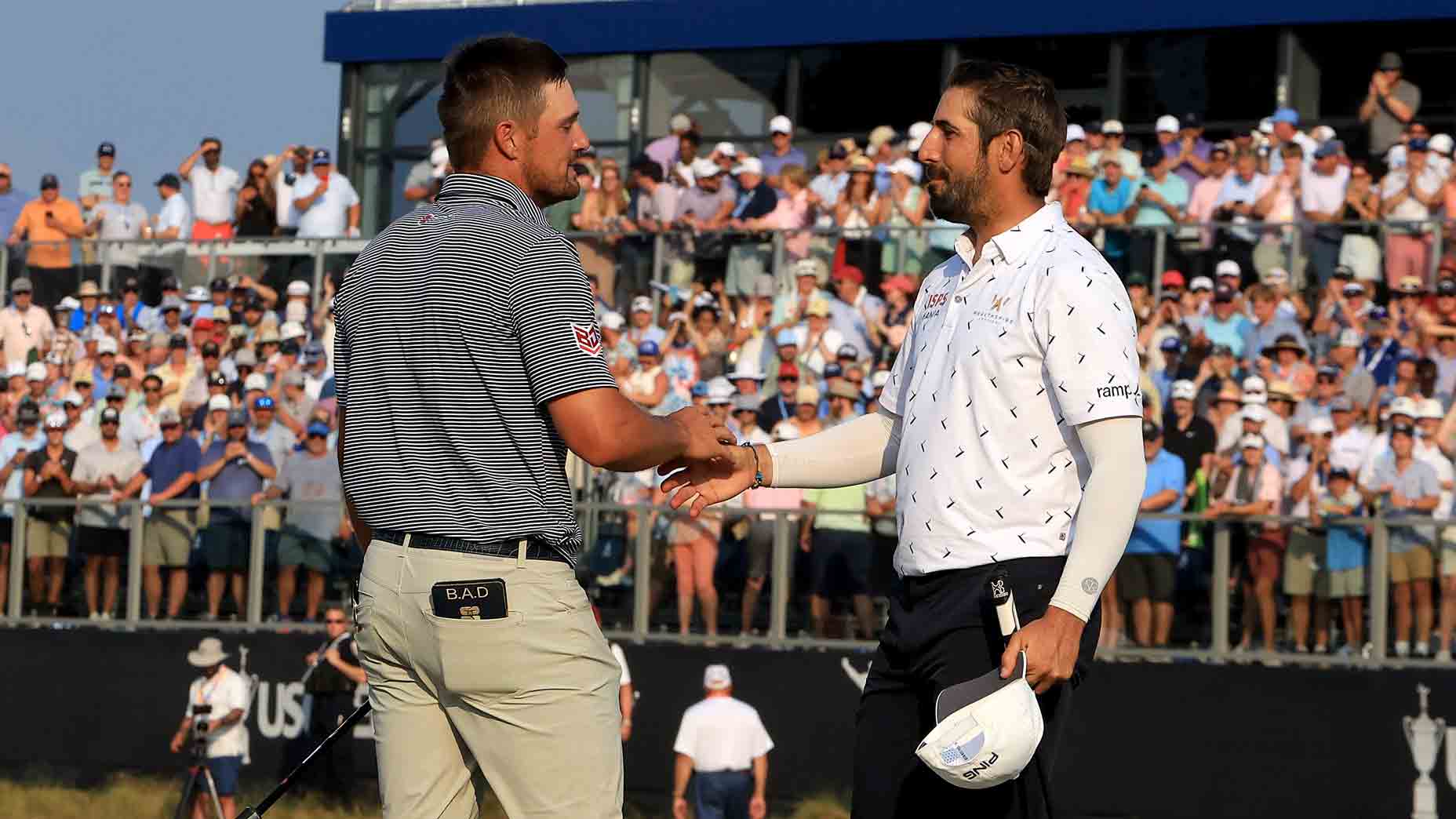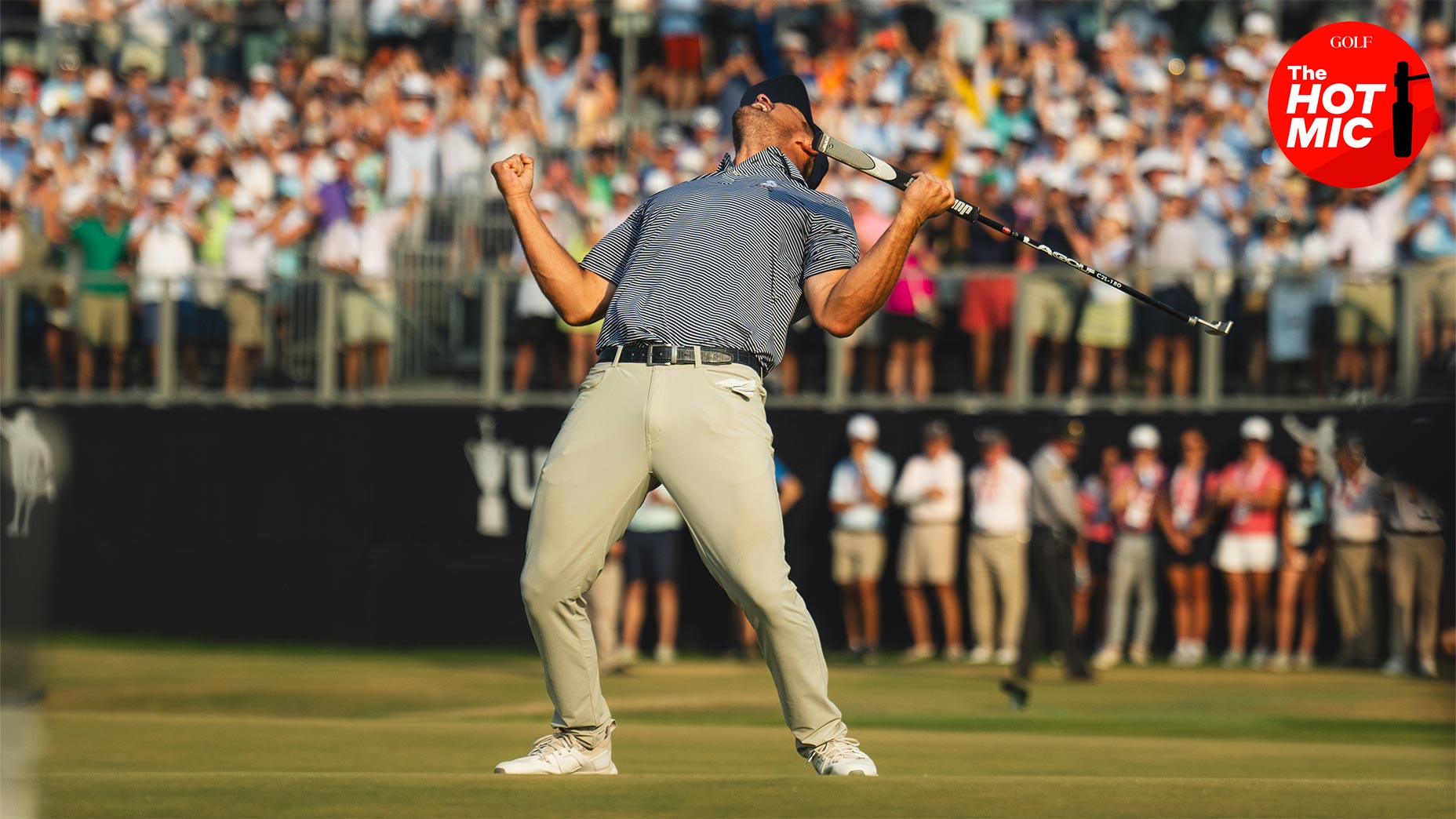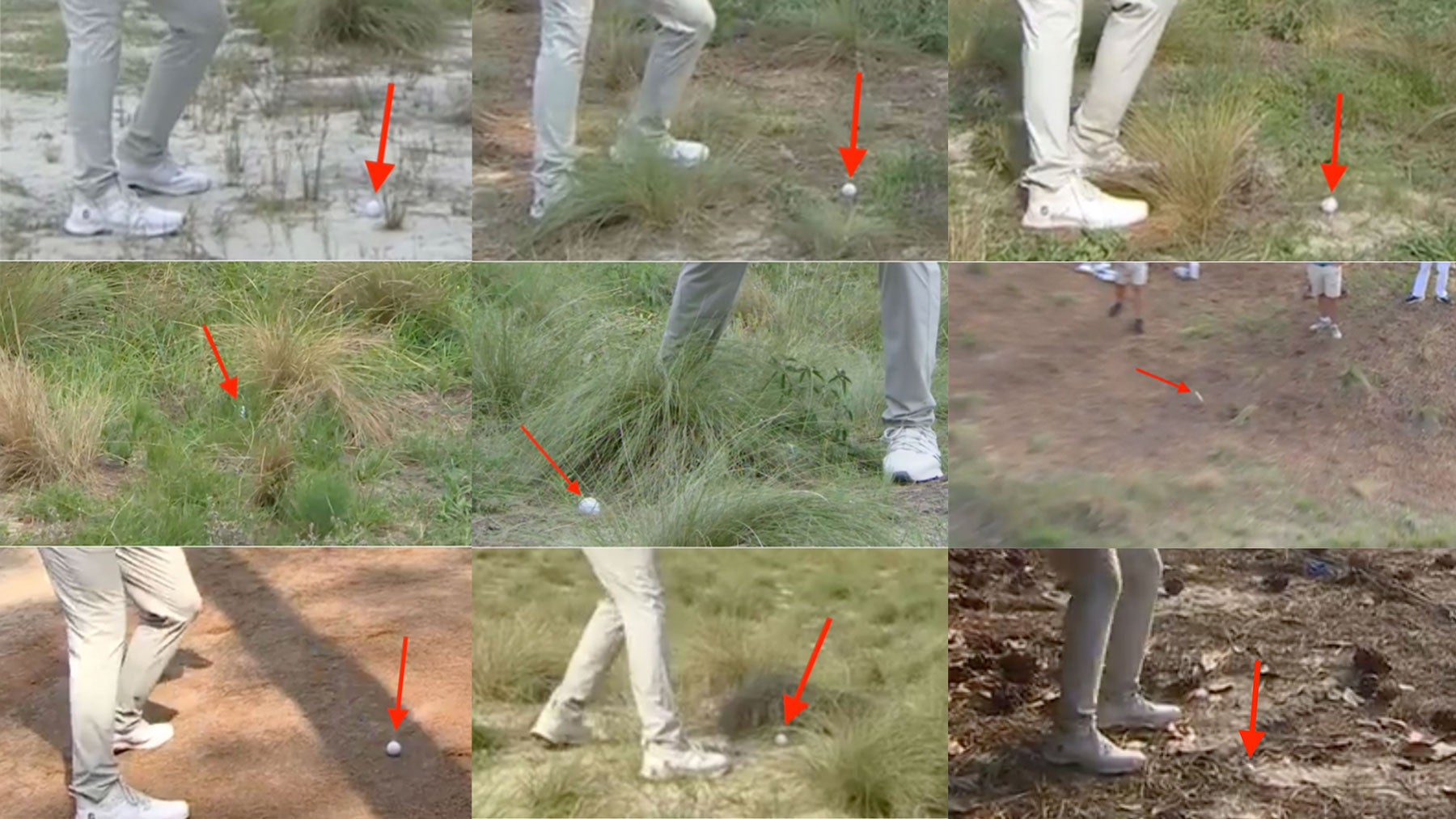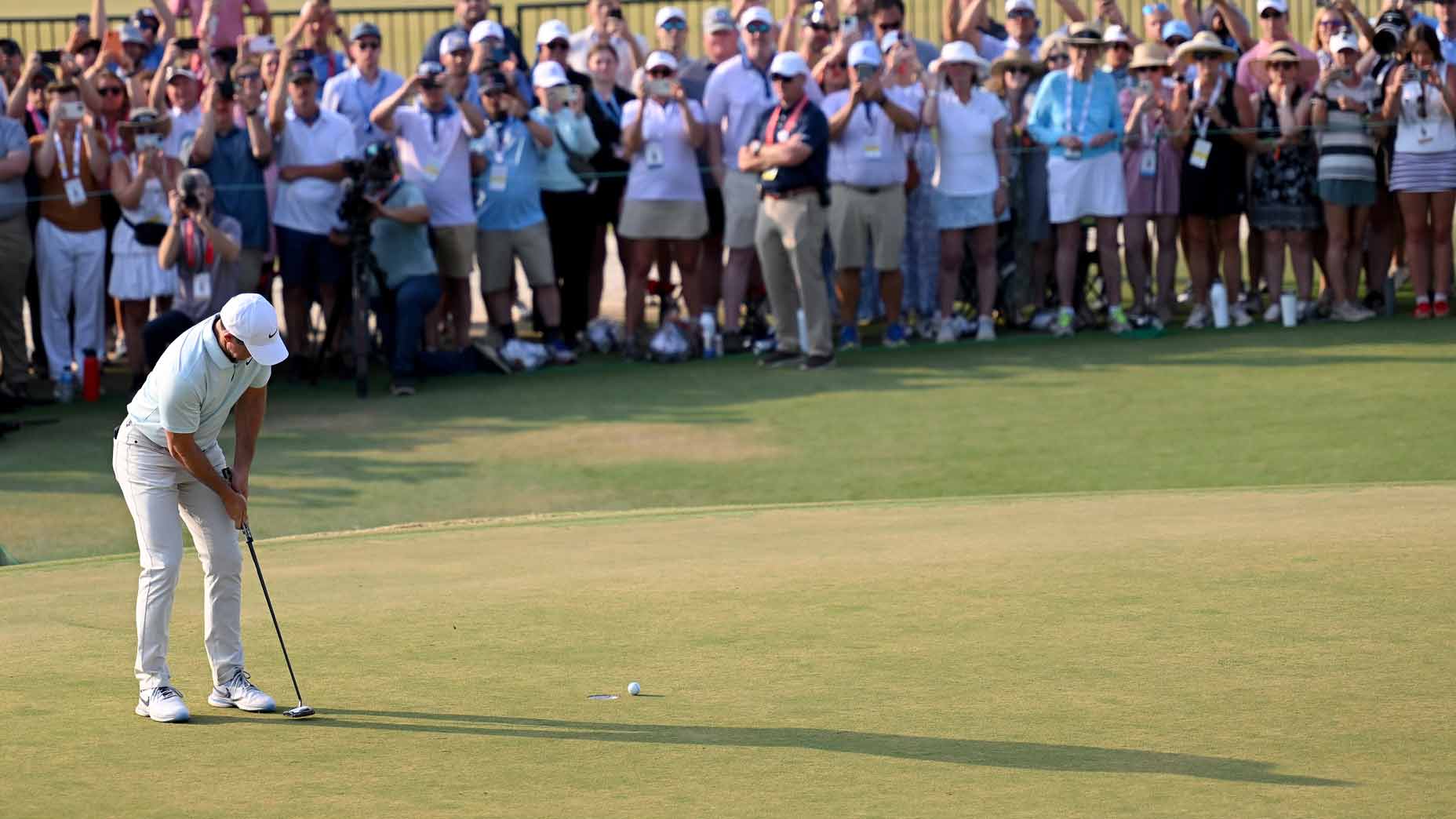Inside the tense moments after Rory McIlroy’s calamitous U.S. Open defeat

Rory McIlroy leaves the Pinehurst clubhouse after the final round of the U.S. Open Sunday.
John Sodaro/GOLF
PINEHURST, N.C. — After it was all over — that is, after Bryson DeChambeau had hit the bunker shot of his life and holed a 4-footer to win this 124th U.S. Open — Rory McIlroy exited the scoring room beneath the Pinehurst No. 2 clubhouse where he had been watching the closing moments of the championship on the NBC broadcast. His white Nike cap was pushed back on his head, brim pointing to the ceiling, the international sign for exasperation, frustration and did this really just happen again? A security guard in a black shirt opened a door and McIlroy and his team, tailed by a Netflix crew carrying a camera and boom mic, slipped into the interior of the clubhouse and down another hallway before disappearing into the U.S. Open Champions’ Locker Room.
McIlroy had earned entrée to that coveted sanctuary by way of his win in 2011, back when Barack Obama was still serving his first term in the Oval Office. Thirteen years have passed since then, a period in which McIlroy has soared to incredible highs‚ including three more major titles, but also endured soul-crushing disappointments and what-could-have-beens, including what on Sunday evening became an 0-for-37 run in the majors and a more-bitter-than-sweet nine consecutive top-10 finishes at the U.S. Open without a victory.
Was this Sunday, though, when McIlroy held a two-shot lead with five holes to play his most heartbreaking major defeat yet?
It was reasonable question to ponder when, after not missing a putt of three feet or less in 496 attempts this season, McIlroy missed a par try of a mere 2 feet, 6 inches on the par-4 16th hole to drop back into a tie, at six under, with DeChambeau. When, needing just a par on the par-4 closer to have an excellent chance of forcing a playoff, McIlroy tugged his tee shot into the wiregrass left of the fairway and missed a par attempt of a mere 3 feet, 6 inches. When the swelling, sweating galleries that packed the grandstands and lined the fairways had been chanting McIlroy’s name — ROR-EE! ROR-EE! — and all but willing their man to victory. When all week long McIlroy had been saying the right things about how to play U.S. Open setups and, in particular, the maddening test that is Donald Ross’s masterwork. “I think I’m embracing the questions that the golf course asks of you,” he said Saturday night. “It tests your chipping. It tests your putting. It obviously tests your mental fortitude more than any other golf tournament.”
As McIlroy was packing up his belongings, Mike Whan, the USGA’s CEO, came fast-walking down the hallway toward the locker room. He was minutes from delivering a speech and presenting a sterling silver trophy to DeChambeau in front of thousands of fans ringing the 18th green. But in this moment Whan was looking out for the runner-up.
“Do we want them in there?” he said to a couple of his staffers; Whan was referring to the Netflix crew. The question was rhetorical, and the message was clear: Give the man some damn space.
A couple of minutes later, a player came strolling down the hallway, en route to the awards ceremony. It was 22-year-old Neal Shipley, who after finishing as the low amateur at the Masters in April had repeated the feat at Pinehurst, finishing at six over for the week to tie for 26th overall. Shipley was smiling as he passed by — who knows how many Opens this ascendant talent has in front of him? — wholly unaware of the scene that was playing out behind the closed door of the locker room. But that’s Sunday evenings at major championships. So many emotions, so many subplots, bumping up against one another.
After another minute or two, the door opened.
Rory.
Hat still propped back. Black leather duffle bag slung over his right shoulder. Tired, shell-shocked eyes. A forlorn look that said, “Take me home.” In tow: his caddie, Harry Diamond, and agent, Sean O’Flaherty. In the air: an eerie quiet. Consolatory words are futile in such moments, and so there were no words at all.
THE DAY HAD STARTED WITH McIlroy and the 54-hole leader by three, DeChambeau, smashing balls together on the range. As DeChambeau fidgeted with driver heads and wrenches and a launch monitor, McIlroy looked in total control of his long game, ripping one tightly drawn 3-wood after the next down the yellowish-green expanse, followed by a series of smashed drivers. When his range session concluded, McIlroy walked up to the practice green that abuts the first tee. Sunday’s first of many “ROR-EE” chants came from a pack of giddy kids in the autograph pen just beyond the range.
On the green, McIlroy was joined by his playing partner, Patrick Cantlay, who McIlroy would be playing with for the first time since he and Cantlay’s caddie, Joe LaCava, clashed at the Ryder Cup last fall. A couple of months later, in an interview with an Irish newspaper, McIlroy further fanned the flames when he described his relationship with Cantlay as “average as best” and also called Cantlay a “d-k.” And now here they were, knotted at four under par, and in the penultimate pairing on U.S. Open Sunday. McIlroy bumped fists with Cantlay on the first tee and shook LaCava’s hand, but that would be the extent of their interaction over the next five-plus hours. This round would be defined by a different brand of drama.
McIlroy’s start could not have been better. He spilt the 1st fairway with an iron, knocked his approach to 20 feet, pin-high left, and drained the birdie putt to move to five under. After his second round, McIlroy had spoken of the importance of accurate approach shots on this course. Take the calculating way by which he had played the 8th hole on Friday: “I had 151 adjusted to the hole. I’m trying to land it 146. I can’t land it 144 because it’s not going to get up there. I can’t land it 148 because it’s going to go over the back of the green. You just need to have a lot of precision. I feel like for the most part I’ve done that well this week.”
This is how the New Rory thinks at this most exacting of tournaments, which had helped explain his amazingly consistent play in recent U.S. Opens heading into this week. McIlroy’s results in his last five Open starts, beginning with 2019: T9, T8, T7, T5, T2. He credited his fine play to “embracing what I would have called ‘boring’ back in the day. Explosiveness isn’t going to win a U.S. Open. It’s more methodically building your score over the course of four days and being okay with that. Honestly, it’s just more of a reframing of a mindset than anything else.”
McIlroy’s lone front-nine slip-up Sunday came at the par-5 5th when his second shot was inches from perfect but instead caught the wrong side of a crest and rolled back off the green into perhaps his most horrid hardpan lie of the week. From there, McIlroy could advance the ball only into the front greenside bunker, leading to a bogey 6 that dropped him two back of DeChambeau.
After birdies at 9 and 10, though, McIlroy was back within one of the lead. If you squinted hard enough through the dusty, humid haze hanging over the course, you could see the momentum shifting. At 12 and 13, two more birdies for McIlroy, on holes that DeChambeau would go bogey-birdie. When both players bogeyed 15, McIlroy still had the lead by one heading to 16. Just three holes — barring any McIlroy miscues or DeChambeau heroics — stood between him and Open glory. If he couldn’t taste it, the Pinehurst faithful could.
McIlroy’s first three shots at 16 were textbook: fairway, green, 27 feet for birdie. He missed that putt but left himself just a formality for par: 30 inches. It was a gimme until it wasn’t. The ball never left the left edge and spun out. If you were there, it took the breath out of you. If you were watching from home, it took the breath out of you. McIlroy: six under. DeChambeau: six under.
Suddenly, the game’s two most exciting players facing off in a two-hole playoff was a likely prospect. McIlroy pulled his tee shot on the par-3 17th into the bunker left of the green, but managed a nifty sand save to stay at minus 6. His tee shot at 18 also missed left — his swing was getting quick — and when he arrived at his ball 123 yards from the green, he found it nestled against a tuft of wiregrass.
McIlroy plays quickly and the weight of the moment did nothing to slow his pace. He and Diamond briefly inspected the lie, picked a wedge and McIlroy settled in over his ball. The contact was less than pure and his ball came up short of the green, leaving him 94 feet to the back-right pin. Again, he played with haste, hitting a beautiful chip that bounced four times on the green before rolling just four feet past and left of the hole. McIlroy had proven on 16 there are no sure things in a U.S. Open, but this putt, too, if you subscribe to statistics, was almost certain to drop.
It did not.
The left-to-righter never had a chance, snapping hard right and glancing off the low side of the hole.
“For him to miss that putt,” DeChambeau would say later, “I’d never wish it on anybody.”
MCILROY’S MAJOR HEARTBREAKS are like snowflakes: no two are exactly alike. The back-nine meltdown at the 2011 Masters will be remembered for the snap hook into the cabins on 10. His 2019 Open Championship at Portursh, near his Northern Ireland home, stunned for his opening 80. Three years later, at the Open Championship at the Old Course, McIlroy couldn’t get out of neutral on Sunday. “I felt like I didn’t do much wrong today, but I didn’t do much right, either,” he said. And this major, in the warm, dusty Sandhills of North Carolina? Gosh, this one might sting most of all. Three bogeys in the last four holes. Two missed putts from a combined 6 feet, 5 inches. One shot short.
We don’t know how McIlroy processed it because he didn’t feel much like talking Sunday evening. He declined to speak with reporters. When he and his team exited the front of the clubhouse, they made the short walk to McIlroy’s courtesy SUV in the past champions’ parking lot. A blue placard on a sign in front of McIlroy’s spot served as a reminder of his U.S. Open victory but also the length of his U.S. Open drought:
Rory McIlroy
2011
McIlroy and Diamond had one last task for the day: loading McIlroy’s green, white and gold TaylorMade bag into the car. When the cargo was aboard, player and caddie clasped hands and leaned into one another. McIlroy closed the trunk, slipped into the driver’s seat and pulled out. Still no words. The only sound was the spinning of tires trying to grab the gravel. And then he was gone.

